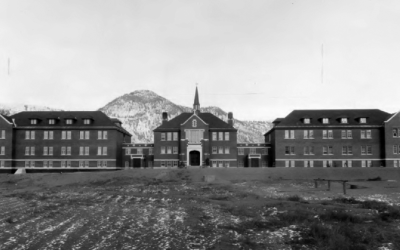Calgary and Ottawa: The Frontier Centre for Public Policy today released The Real Have-Nots in Confederation: Ontario, Alberta and British Columbia.This study shows how Canada’s equalization program creates generous programs and large governments in have-not provinces. Simply put, taxpayers in the traditional “have” provinces subsidize substantially more generous public services in the recipient provinces.
Written by Frontier policy analyst Ben Eisen and director of research Mark Milke, the study finds that the well-intentioned program has a number of adverse, unintended consequences. It subverts democratic accountability and provides an incentive for have-not provinces to spend more freely on government programs than they would if taxpayers elsewhere were not being forced to pick up part of the tab..
Program details:
Equalization is a $14.2 billion federal program which transfers federal tax dollars to provincial governments. In 2009/10, Quebec will take the lion’s share of the money at almost $8.4 billion, while the other major recipients include Manitoba at just over $2-billion, New Brunswick at almost $1.7 billion, and Nova Scotia at almost $1.4 billion.
This study takes the “long view” of equalization. Thus, while Ontario will receive equalization payments of $347 million this year, this is an anomaly; most years, Ontario is a “have” province on equalization and is counted as such in this study. In addition, Ontario is still a net contributor to confederation and federal coffers when other transfer programs are included.
Equalization is described in the following manner Subsection 36(2) of the Constitution Act, 1982:
“Parliament and the government of Canada are committed to the principle of making equalization payments to ensure that provincial governments have sufficient revenues to provide reasonably comparable levels of public services at reasonably comparable levels of taxation.”
Findings:
In fact, far from “comparable levels of services,” British Columbia, Alberta and Ontario have lesser levels of services. For example:
· Nova Scotia and Quebec have more doctors per 100,000 people than do B.C., Alberta and Ontario;
· New Brunswick, Prince Edwards Island, Nova Scotia, Manitoba, and Quebec have more nurses per 100,000 people than do Ontario, Alberta and British Columbia;
· Prince Edwards Island, New Brunswick, Manitoba, and Nova Scotia have more long-term residential care beds per 100,000 people than do Ontario, Alberta and British Columbia;
· On social service spending, Quebec spends more per capita than any other province, at $2,342, while British Columbia is second at $1,702; the other two have provinces, Alberta and Ontario, spend $1,592 and $1,398 respectively;
· In terms of provincial public servants per 100,000 people, PEI, Manitoba, New Brunswick, Nova Scotia and Quebec all have more provincial civil servants than do Ontario, Alberta and British Columbia; perhaps more than any other indicator, this measurement reveals how have provinces subsidize large governments in the have-not provinces through the federal equalization program.
“The real have-nots in Confederation are those provinces that have, through their federal tax dollars, historically contributed massive amounts to equalization,” write authors Eisen and Milke. “British Columbia, Alberta and Ontario now find their benefits from taxation are demonstrably fewer than those available in the provinces to which they have contributed so much, the so-called have-nots.”
Results and unintended consequences:
· The federal government has never measured the comparability of programs across Canada;
· Equalization damages the entire country because it transfers excessive amounts from high productivity jurisdictions to those with lower levels. Efforts are raising national levels of productivity to match our competitors are thus harmed.
Remedies:
· In the short-term, freeze equalization spending;
· The federal government) should regularly measure and publish levels of public services available in all the provinces to see whether the constitutional intent is being honoured; this does not require a new bureaucracy but simple disclosure of existing data;
· The governments of Ontario, Alberta, British Columbia and Saskatchewan—the latter of which also looks to be a long-term “have” province—must combine to advise the federal government and recipient jurisdictions on both the scale of the problems caused by regional transfers and on the solutions;
· Medium to long-term, all provinces should urge an end to transfers in return for GST revenue and other tax room as necessary in order to facilitate an end to the equalization program.
Selected government services in Quebec, Ontario, Alberta and British Columbia
|
|
Quebec
|
Ontario
|
Alberta
|
British Columbia
|
|
Regulated child-care space for children under 5 years of age
|
25%
|
19.6%
|
17.4%
|
18.3%
|
|
Elementary student-educator ratio
|
13.5
|
14.5
|
16.8
|
16.6
|
|
Average university tuition
|
$2,167
|
$5,643
|
$5,361
|
$5,040
|
|
Physicians per 100,000 population
|
217
|
176
|
197
|
199
|
|
Nurses per 100,000 population
|
717
|
633
|
715
|
619
|
|
Percentage of residents spending more than 1% of income on prescription drugs
|
28.7%
|
13.6%
|
17.4%
|
23.3%
|
|
Social services spending per capita
|
$2,342
|
$1,398
|
$1,592
|
$1,702
|
(Most generous amounts/ratios in bold)
Download a copy of the The Real Have-Nots in Confederation here.
For more information and to arrange an interview with the study’s author, media (only) should contact:
Ben Eisen
416-587-1106
Mark Milke
403-630-0875
Gary Slywchuk
Troy Media Corporation
403-835-8192


